Ring Video Doorbell Pro review: A smart doorbell for Windows 10
Is the Ring video doorbell system still worth it in 2017? I take a look at the latest Ring Video Doorbell Pro and how well it works with Windows 10.
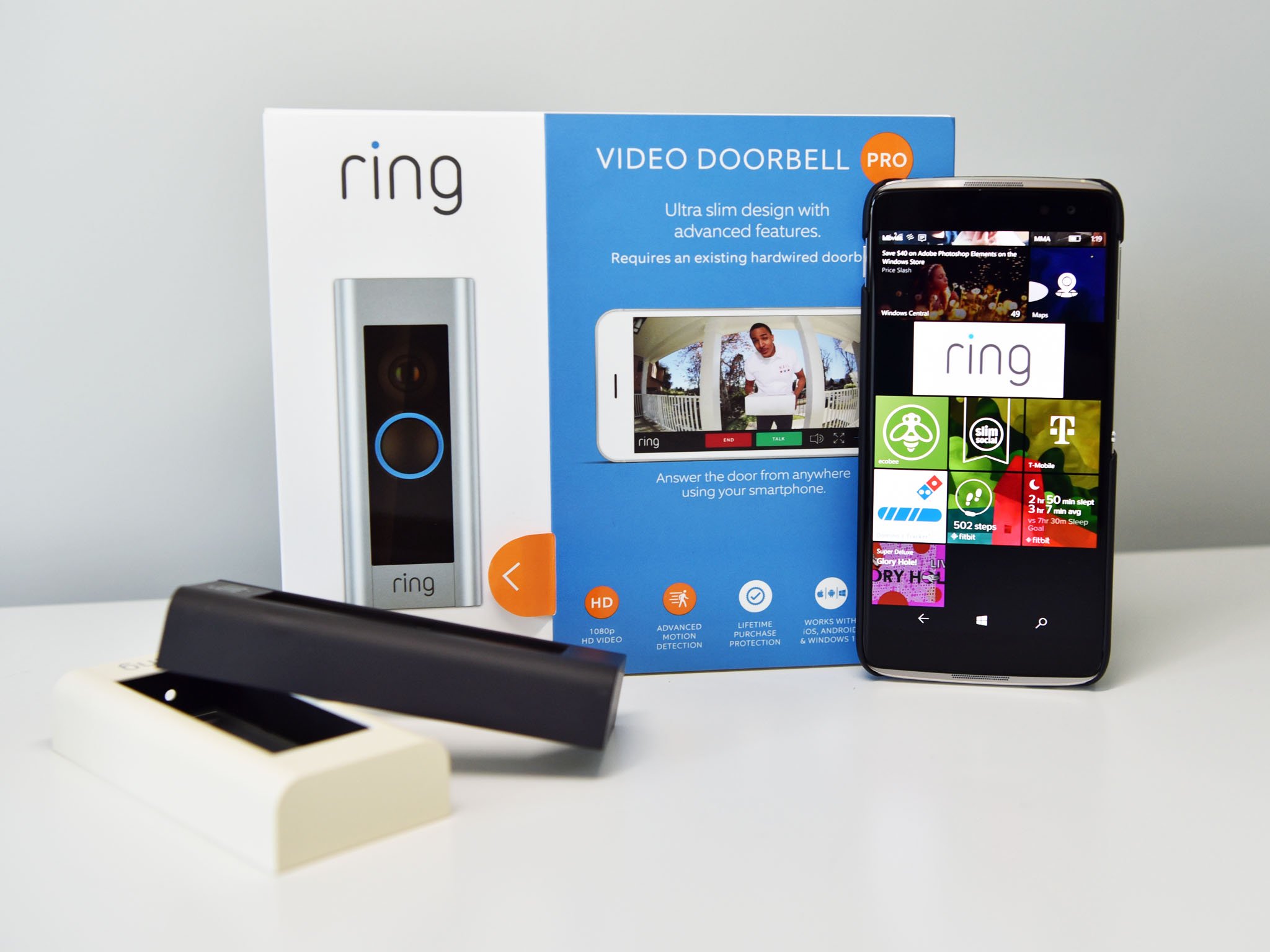
In early 2016, I took a close look at the Ring Video Doorbell app for Windows 10 PCs and Mobile. A lot has changed on the Ring front with some new hardware including its Stick Up Cam which we recently reviewed.
In setting up a new house with the latest smart home accessories, I picked up the Ring Video Doorbell Pro during Amazon's Prime Day. So, nearly a year and a half later is the Ring video system still worth the investment? Let's find out.
What is Ring Video Doorbell Pro?
Ring – like Nest, Insteon, SmartThings, Wink, and Philips Hue – is carving out a substantial, but niche space in the smart home world.
The basic concept behind Ring products is simple: replace your doorbell with a connected one that features a security camera, speaker, and microphone. That may sound a bit odd, but it's a super easy installation and a well-done security camera for the front of your home or apartment.
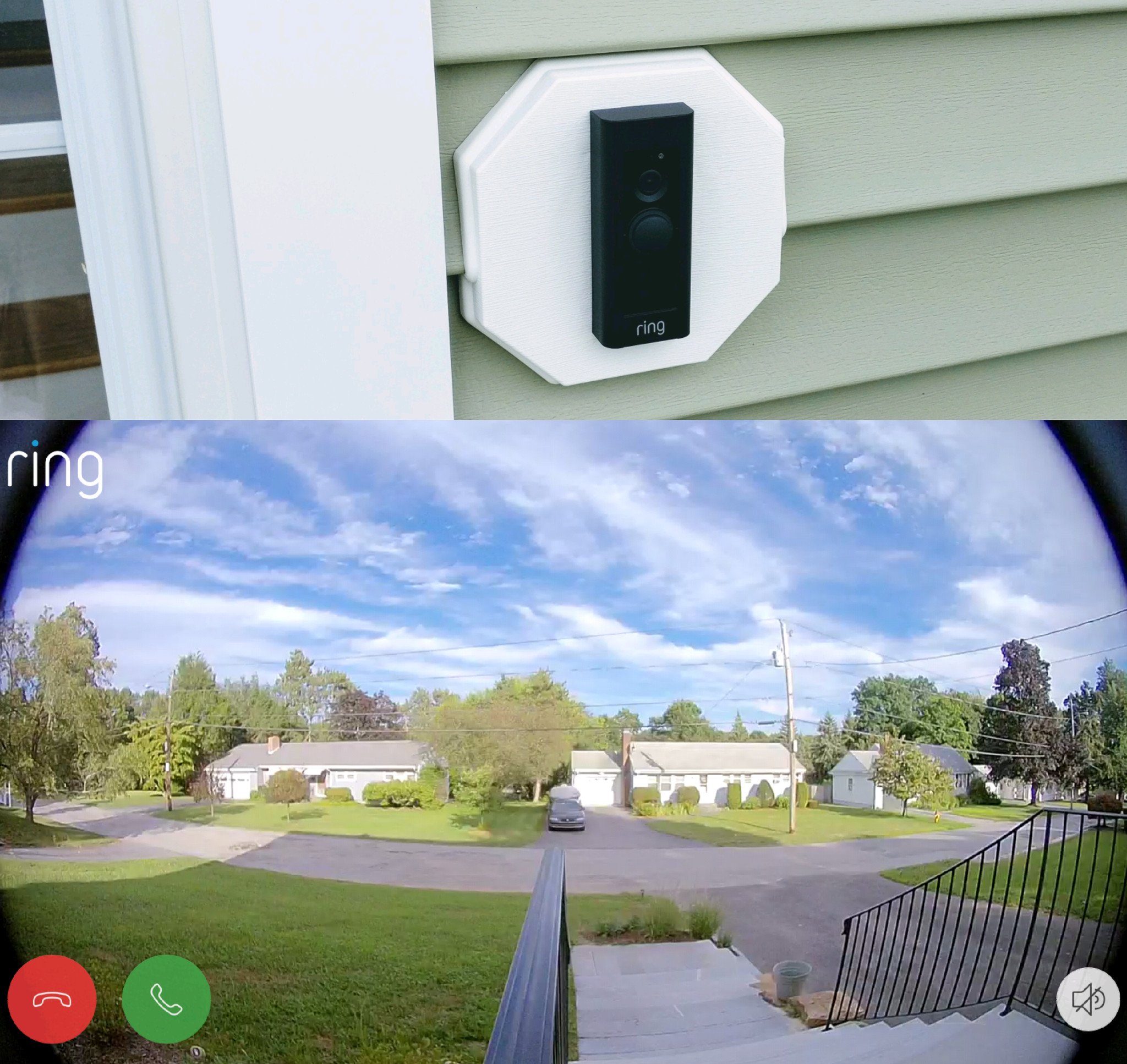
The Ring Video Doorbell Pro has a speaker, microphone, camera, IR lights, and a physical button to ring. If someone rings your bell, you get an alert on your Windows 10 PC, Windows 10 Mobile phone, Android or iOS device. You can then answer the door remotely while seeing and even talking to the person at your door.
If someone doesn't ring your bell but approaches it motion sensors can also alert you to their presence. In fact, you can set up custom "zones" for your entire front yard of where you want Ring to watch for motion. The Ring Video Doorbell Pro also has advanced "human detection" to avoid motion from cars or small animals.
All activity is recorded to the Ring cloud and can be accessed from any smart device. The videos can be deleted, saved directly (downloaded), or shared.
Get the Windows Central Newsletter
All the latest news, reviews, and guides for Windows and Xbox diehards.
The optional Ring cloud comes with a free 30-day trial. Afterward, it is $3 a month or $30 a year for each device. You do not need the cloud service as Ring still operates with "real-time notifications and live streaming video of events without saving a video of the event."

Since my initial review, Ring is expanding its portfolio with newer products like the Stick Up Cam. The company now has five standalone non-doorbell security cameras with power sources ranging from wired, to a battery, to even solar. Those last two are not out yet but are due sometime in Fall 2017 (I'll likely review at least one of those for my backyard).
Compared to my original Ring Video Doorbell, the newer Ring Video Doorbell Pro is a step up in design and functionality, which is why I grabbed it. Here is how they compare:
Ring Video Doorbell vs. Video Doorbell PRO
| Category | Doorbell | Doorbell Pro |
|---|---|---|
| Wi-Fi | 2.4GHz | 2.4GHz + 5GHz |
| Video quality | 720p | 1080p |
| Motion detection | Basic | Advanced |
| IR Method | Infrared heat | Pixel mappings (faster) |
| Human detection | No | Yes |
| 2-Way Talk | Yes | YesEcho cancellation |
| Encryption | Yes | Yes |
| Night Vision IR | Yes | Yes |
| Included face plates | No | Yes |
| Power Source | Battery or Hardwired | Hardwired-only |
| Field of View | 130 degrees | 160 degrees |
Besides refreshed features, the Pro version is significantly leaner and sleeker with a more modern slim design.
The original video doorbell chimes in at $179 versus the $248 Pro model. There is also an in-between model with the Ring Video Doorbell 2 ($199) and a crazy professional edition dubbed Video Doorbell Elite for businesses, or I suppose rich people – that runs for an eye-watering $499.
Ring Video Doorbell Pro setup
One significant difference between the Pro and non-Pro Ring Video Doorbell is the required hardwired setup. At our Windows Central office, we use the battery-operated Ring Video Doorbell as it's ideal for indoor usage like in an apartment building.
Ring Video Doorbell Pro, however, requires two wires for power making it more suitable for a house with an existing regular doorbell setup. Presumably, the reason for the hard-wired requirement is the new Full HD 1080p color camera and night vision that the Pro has compared to the lower quality 720p in the battery-operated version. The Pro is also smaller than the original Ring and Ring 2, so there's less space for a long-lasting battery. The specific requirement for Pro is a standard 16-24 VAC doorbell and transformer.
In the Ring Video Doorbell Pro kit, you get the following components:
- Ring Video Doorbell Pro.
- Pro Power Kit.
- Four interchangeable faceplates.
- Screws, screw driver, wire clips, instructions.
- Ring security window sticker.
As someone still getting familiar with electricity and wires, I found connecting the Ring Video Doorbell Pro very easy.
The Pro Power Kit is an easy-to-install relay harness system that attaches to your current doorbell's chime. A basic doorbell is just a circuit that you're closing when you push the button to trigger the chime. The Pro Power Kit both ensures that there's constant power to the doorbell so the Ring camera and radio will work and sends the appropriate signal to the chime itself when the doorbell button is pressed.
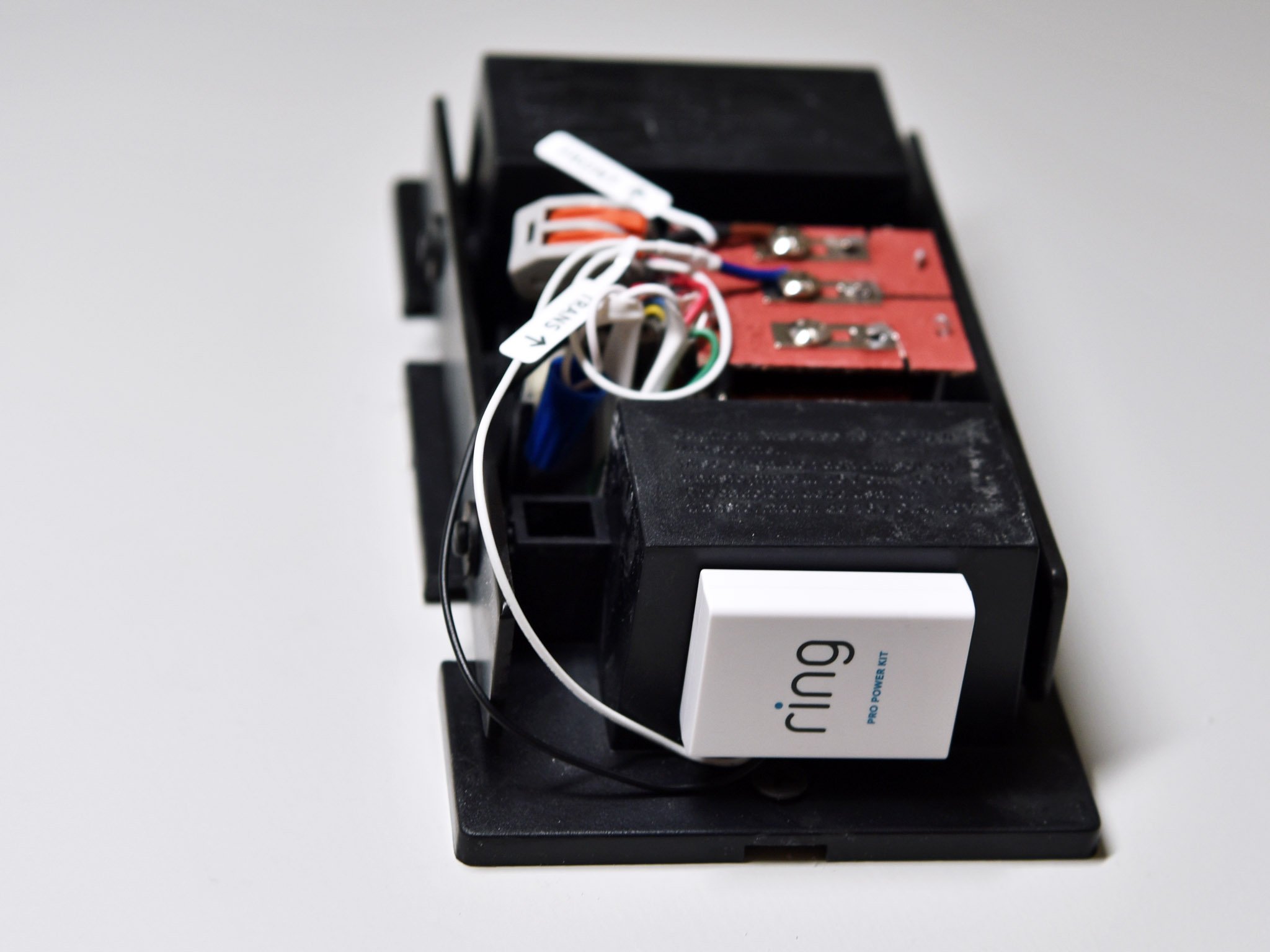
I won't belabor the instructions as Ring has some outstanding how-to videos that demonstrate how it all works. Of course, you'll want to turn off the power breaker before you do any electrical work.
Next, you replace your existing doorbell in the front of your house. Most traditional existing doorbells are easy enough to remove (just two screws on mine) with just two wires that run to the chime. Take the old one off, hook up the Ring and mount it back on the wall.
I should caution that every house is different. Mine has vinyl siding that is too thin to mount the Ring Video Doorbell Pro directly, so I had to pick up a $12 Builders Edge Surface Block, which creates a larger mounting area for the Ring Video Doorbell Pro. It was simple enough to install with a pair of wood screws, and I may add some clear silicone to seal the edges, but the install is secure and solid.
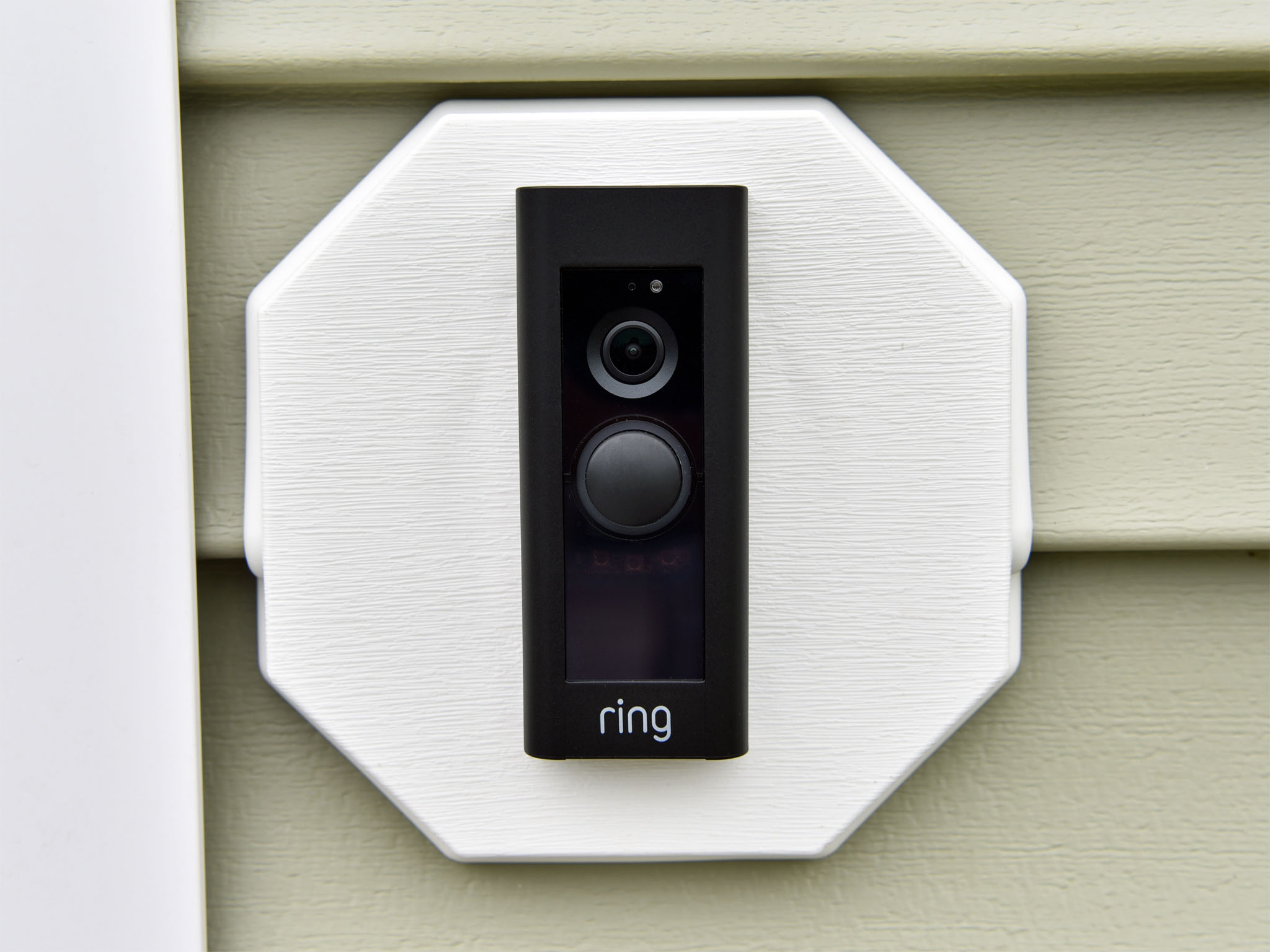
Ring includes four faceplates with assorted colors including magnesium, black, off-white, and a brownish-black. The plate just clips on to the doorbell, and it is secured with a single screw on the bottom.
The whole installation took about 40 minutes mostly because I dry-ran the entire process a few times. Drilling into one's house is not something to be taken lightly!
Ring Video Doorbell Pro Windows 10
Once connected, the Ring Video Doorbell Pro's button has a circular light that begins pulsing. Audio comes on through the speaker letting you know that the setup process is initiated.
From here you can launch the Ring app for Windows 10 on your PC or Mobile device – likewise if you have an Android or iPhone.
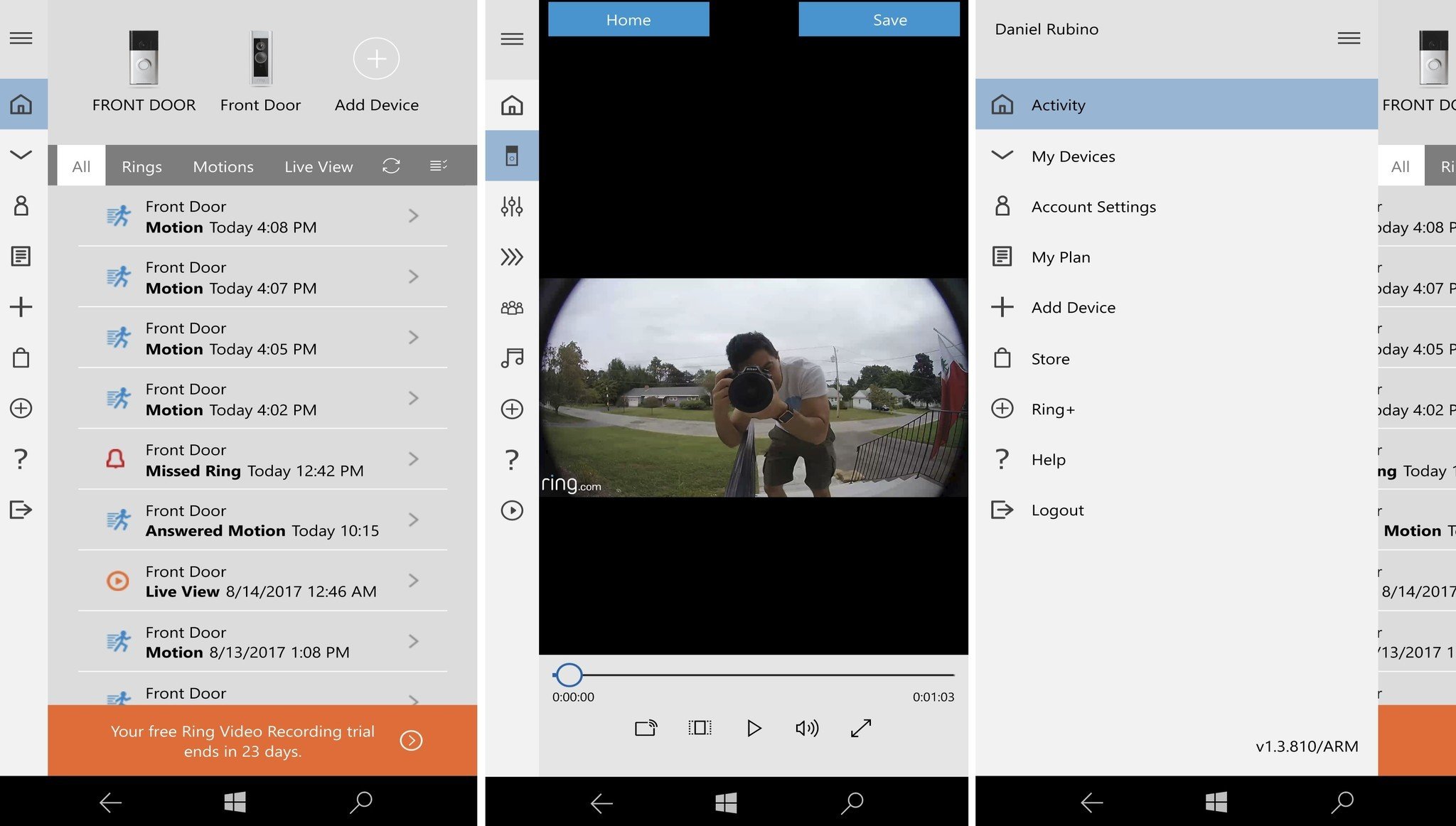
The app is very straight forward where you create an account and then relay your Wi-Fi network to the Ring Video Doorbell Pro.
Once connected you can proceed to tweak your Ring Video Doorbell Pro including:
- Set up zones to monitor including custom schedules e.g. "only monitor between 1 am, and 8 am every weekday".
- Live view – Turn on the camera and get live video and audio anywhere, anytime.
- Manage other Ring devices including call and motion alerts.
- Manage account and billing for optional cloud service.
- Add more devices or sub-users.
- See device activity, manage videos.
So far, so good. The Ring Windows 10 app admittedly doesn't get as many updates as I would like, but it does work with its latest products. The company is also advertising Windows Store support on its site and the product packaging as well.
The only issue I faced is with the Surface Studio in Fast Ring. For some reason, the live video feed does not work initially, but it turned out to be a weird network issue that was eventually resolved on my end. That stream, however, did work on the Surface Laptop, and all my other Windows 10 PCs. Likewise, for the Alcatel Idol 4S/Pro, HP Elite x3, and my Android/iOS smartphones.
There are also some advanced features for the Ring Video Doorbell Pro that are missing in the Windows 10 app, such as:
- Device health.
- Motion sensitivity and schedule.
- Floodlight and Spotlight Cam integration.
Those missing features or support for the latest security cameras give me pause if you are 100 percent a Windows 10 user without access to an Android smartphone or iPhone.
Alert notifications arrive instantly on all my devices with specific information. Clicking the alert takes me to the app where I can watch the event replay.
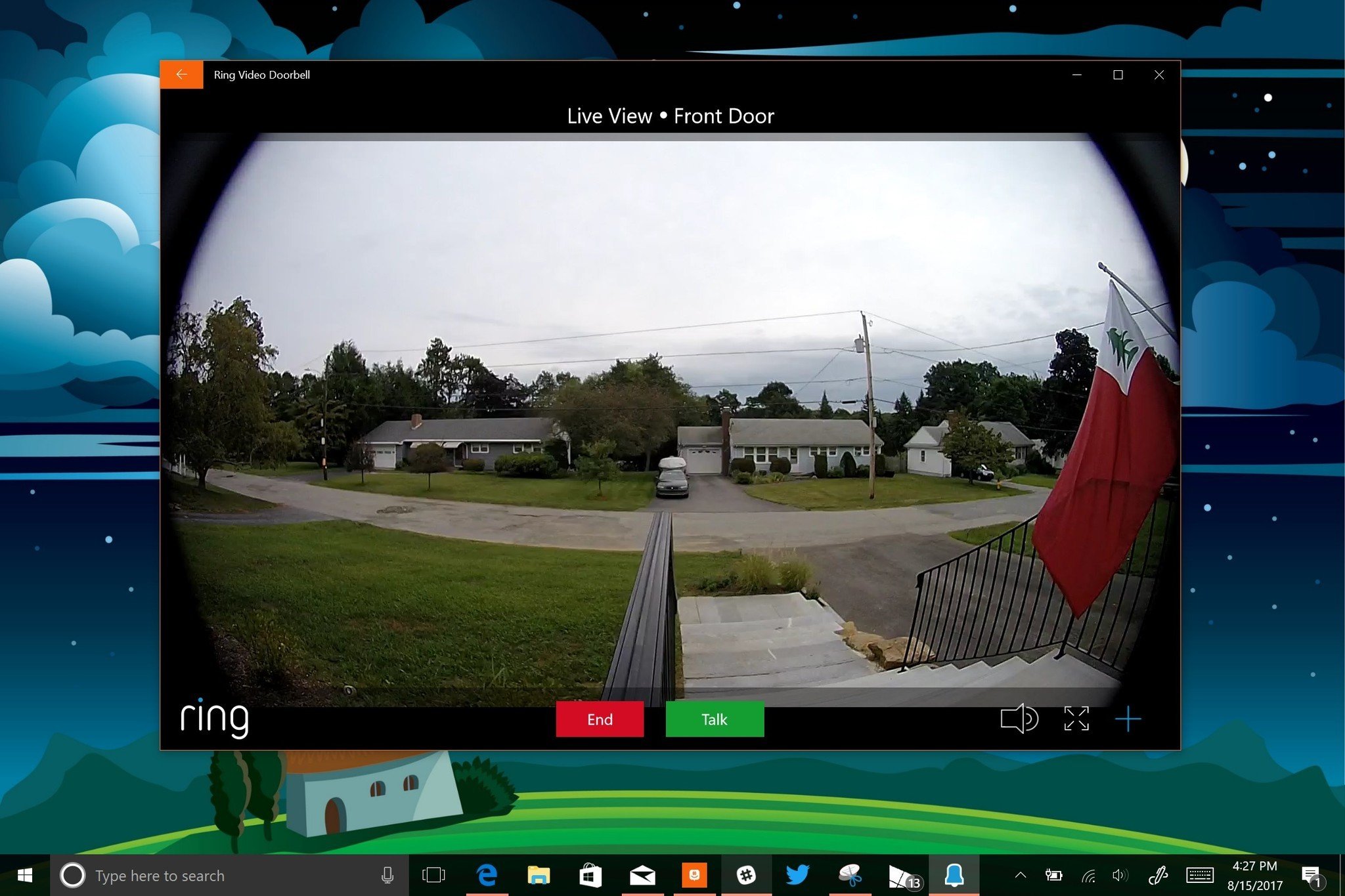
The 1080p video quality was excellent, and it worked quite well in the middle of the night with the IR lights. Audio is simply OK. It works, but the speaker on the Ring and the transmitted audio is tinny.
Ring Video Doorbell Pro is a (mostly) a winner
Committing to a smart home setup is a daunting task. Customers today have almost too many choices, many of which are not interoperable.
Ring stands out as one of those companies that not only are doing well, but are actually flourishing. While not cheap, I feel the products are of high quality, and I'm frankly just happy that its Windows 10 apps for Mobile and PC still work and get the job done even if most users will be on iPhones or a Samsung.
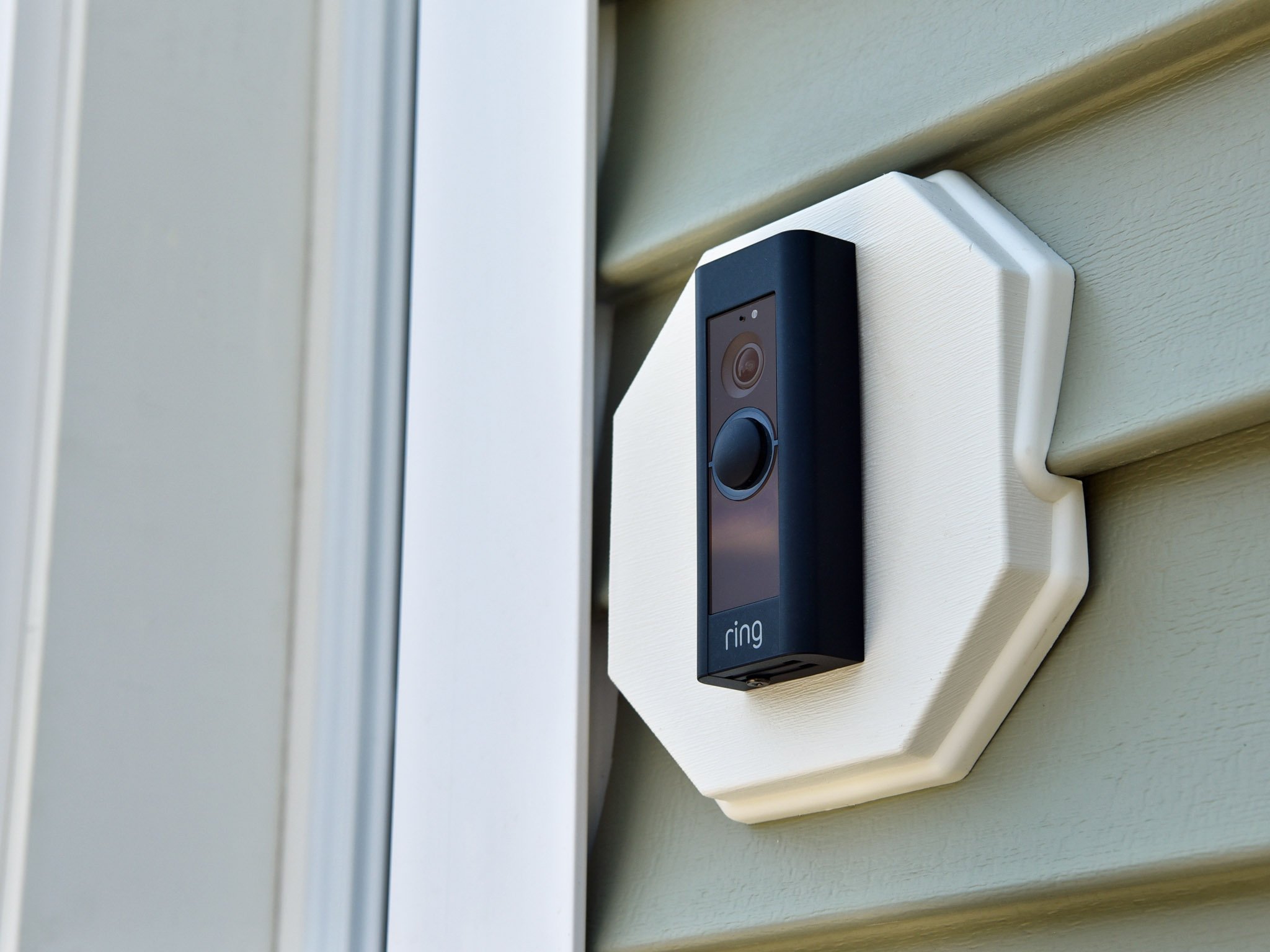
I should mention that the Ring Video Doorbell Pro also supports Amazon Alexa including its new Echo Show for video monitoring. It remains to be seen if Microsoft will add support through Cortana for its forthcoming connected speaker made by Harmon Kardon but Microsoft is making progress in that space with announcements coming soon.
While it may seem weird to have a video doorbell the Ring system is more about security and peace of mind. There's nothing neater than being away from your house and flipping open a live camera stream of your front yard, or getting an alert that someone is on your property.
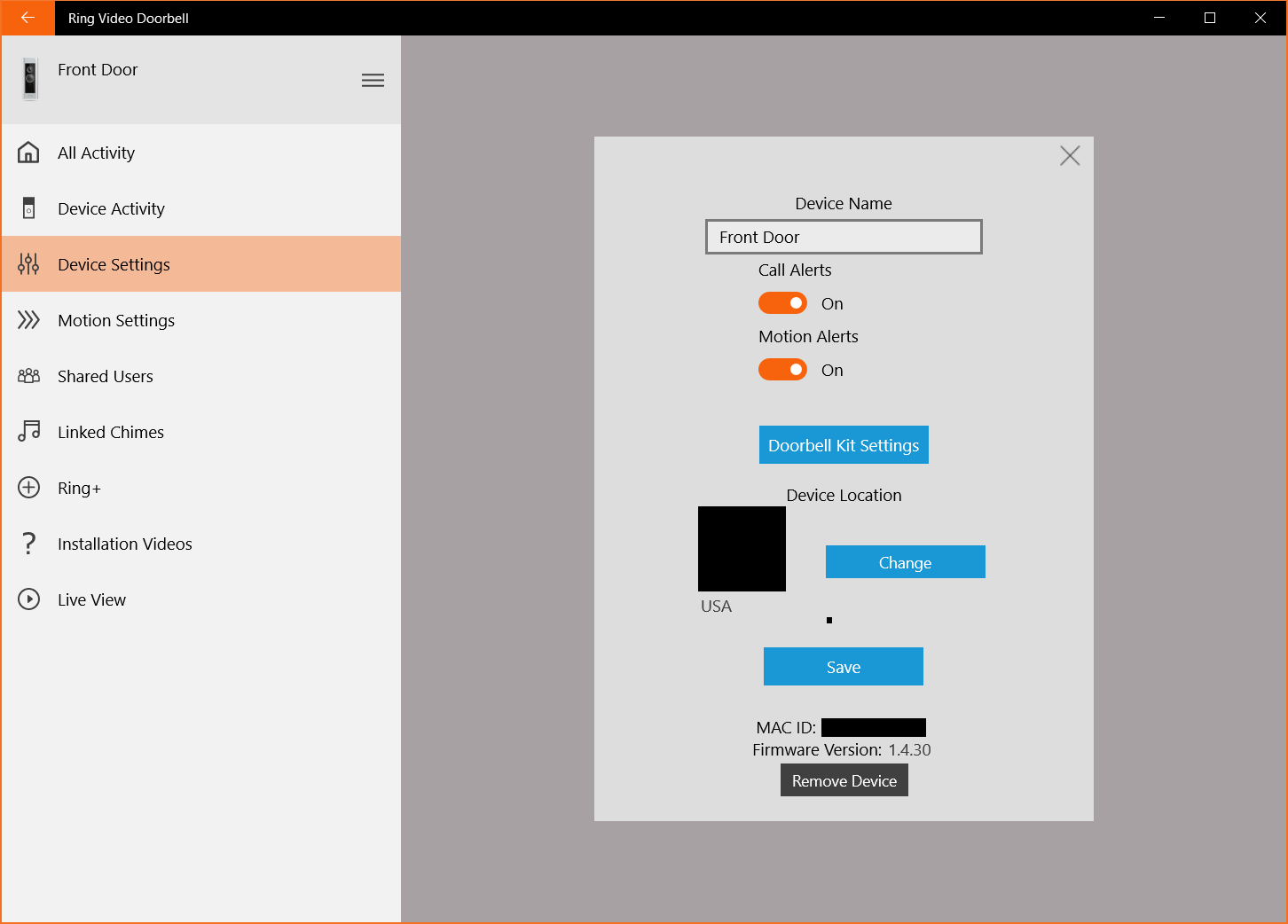
I found the zone monitoring to be accurate with nary a false report. The Windows 10 app, while not exciting looking, worked well with alerts and the ability to monitor my doorbells, users, and more.
I am concerned with some missing features with the Pro doorbell and future support for Ring's security cameras. I hope the company has an update planned for Windows 10 to keep it on par with iOS and Android. I've reached out to the company for comment.
Ring Stick Up Cam helps you keep an eye on the great outdoors
If, however, you have access to an iPhone or Android-enabled device the Ring system is on more solid footing. The Windows 10 app for PC, in that case, works more like a bonus live-streaming app that also gets notifications, which is very useful when working.
I plan to continue to use Ring and can recommend them for your smartphone setup. The one feature that would be nice is for local-recording of Ring's video files, but that is something I do not see coming soon.
Let's see how the company fares this fall with its new security cameras and whether Windows 10 is still its plans.
Pros:
- Excellent 1080p video quality.
- Easy setup and support.
- Works with Windows 10, iOS, and Android.
- Well-made hardware and kit.
Cons:
- Smart home gear is still expensive.
- Requires hardwired setup and Wi-Fi.
- Windows 10 app could use an update with new features.

Daniel Rubino is the Editor-in-chief of Windows Central. He is also the head reviewer, podcast co-host, and analyst. He has been covering Microsoft since 2007 when this site was called WMExperts (and later Windows Phone Central). His interests include Windows, laptops, next-gen computing, and wearable tech. He has reviewed laptops for over 10 years and is particularly fond of 2-in-1 convertibles, Arm64 processors, new form factors, and thin-and-light PCs. Before all this tech stuff, he worked on a Ph.D. in linguistics, performed polysomnographs in NYC, and was a motion-picture operator for 17 years.
